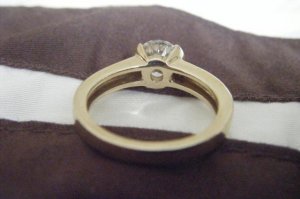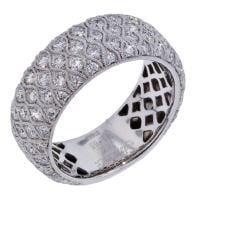Hi Everyone,
I've been looking at some rings and have my sites on this engagement ring that is about 5 mm width and is encrusted with pave set diamonds on the whole band and the sides too (yes it is the right size).
My question is when you look underneath the band the band looks hollow underneath instead of seeing solid gold. Why is that?
Can anyone answer my question?
I've been looking at some rings and have my sites on this engagement ring that is about 5 mm width and is encrusted with pave set diamonds on the whole band and the sides too (yes it is the right size).
My question is when you look underneath the band the band looks hollow underneath instead of seeing solid gold. Why is that?
Can anyone answer my question?





300x240.png)